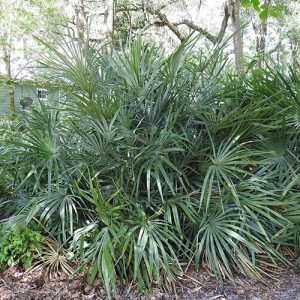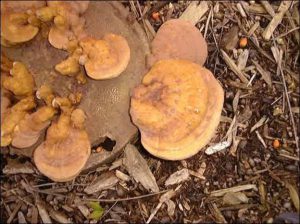 When it comes to finding a tropical plant which can tolerate below-freezing temperatures, the Needle Palm (Rhapidophyllum hystrix), is a winner, having been known to tolerate temperatures as low as -15 d F.
When it comes to finding a tropical plant which can tolerate below-freezing temperatures, the Needle Palm (Rhapidophyllum hystrix), is a winner, having been known to tolerate temperatures as low as -15 d F.Planting Site
Although relatively slow-growing, needle palms grow to 8 ft. tall by 10 ft. wide at maturity. The ideal planting site for needle palms has moist, well-drained soil, in partial-shade, although it can adapt to full sun. Because of the spreading Amulti-stem growth habit and 4 to 10 inch needle-like spines at the base of the trunk (from which the palm gets its moniker), needle palms should not be planted too close to high traffic areas.
Nutrient requirements
Typically, needle palms do not experience significant nutrient deficiencies, but when supplementing soil nutrients, palms do best when fertilized with specially formulated palm fertilizers. Yellowing fronds or yellow/brown spots on fronds can be indicative of potassium and magnesium nutrient deficiencies. To learn more about palm nutrient requirements click on this link: fertilizing palms.
Pests and diseases
 Although not a significant host to major pests, needle palms can be susceptible to the fungal disease Ganoderma. The most noticeable sign of this Ganoderma is a mushroom (aka conk) growing at the base of the palm trunk. Click on the link for more information on Ganoderma.
Although not a significant host to major pests, needle palms can be susceptible to the fungal disease Ganoderma. The most noticeable sign of this Ganoderma is a mushroom (aka conk) growing at the base of the palm trunk. Click on the link for more information on Ganoderma.
Learn more:
For more information on Needle Palms, click on this link.
Note: All images and contents are the property of UF/IFAS.



